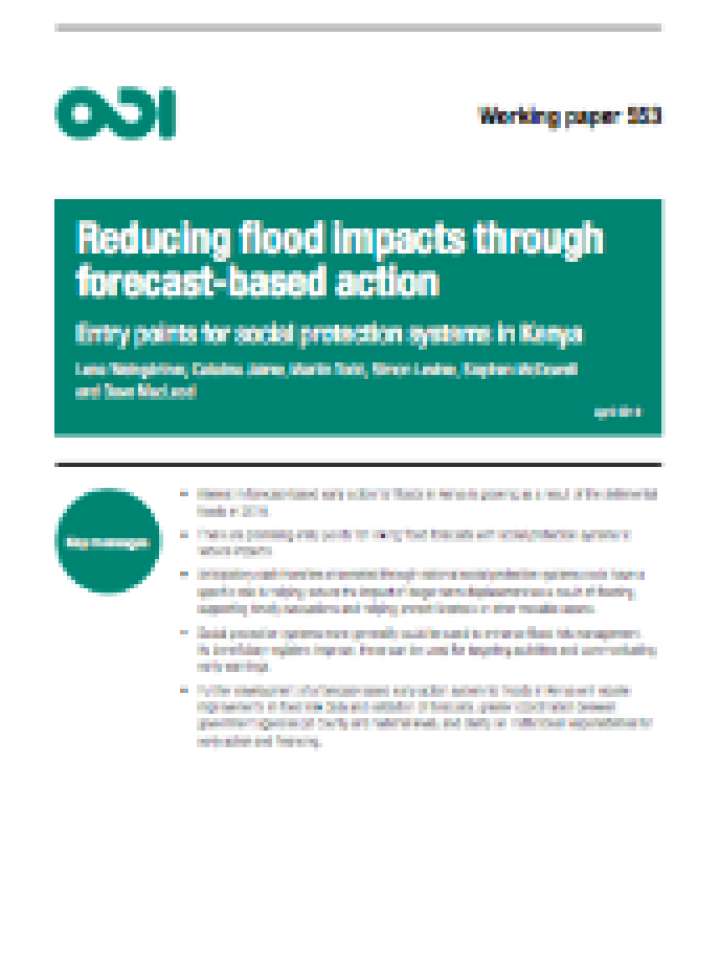Reducing flood impacts through forecast-based action: entry points for social protection systems in Kenya
This paper examines the potential for scaling up forecast-based early action (FbA) in Kenya through existing social protection systems, with a focus on reducing flood risk. The authors assess the components of a flood FbA system: flood forecasting capabilities; the types of action that could reduce impact and the institutions that would need to be involved in taking them; options for using social protection systems to deliver support ahead of time, and questions around targeting the most vulnerable; and potential financing instruments.
Cash transfers could have a specific role in helping people avoid or mitigate longer-term displacement as a result of flooding. Anticipatory cash transfers could also help support timely evacuations and the protection of livestock or other movable assets. However, these transfers will not necessarily reduce impacts such as mortality from dam failure and river crossing, or damage to critical infrastructure. While crop and livestock losses from localised flooding can be detrimental to households, their aggregate impact at national level may be fairly small, and some crops could benefit from the rains. Determining whether anticipatory cash transfers through national systems would provide effective protection in such cases requires further investigation. Savings and insurance coverage might be more appropriate for managing these kinds of risks at the household level.
Despite the limitations of cash transfers, social protection systems more generally could play a critical role in flood risk management. Kenya is moving towards a Single Registry of social protection transfer beneficiaries, and this could be used for targeting other activities and communicating early warnings. Public works programmes have been used to carry out activities such as clearing water channels in anticipation of heavy rain, but the benefits of linking such programmes more systematically with flood forecasts compared to other options for water system maintenance remain to be tested.
Explore further
